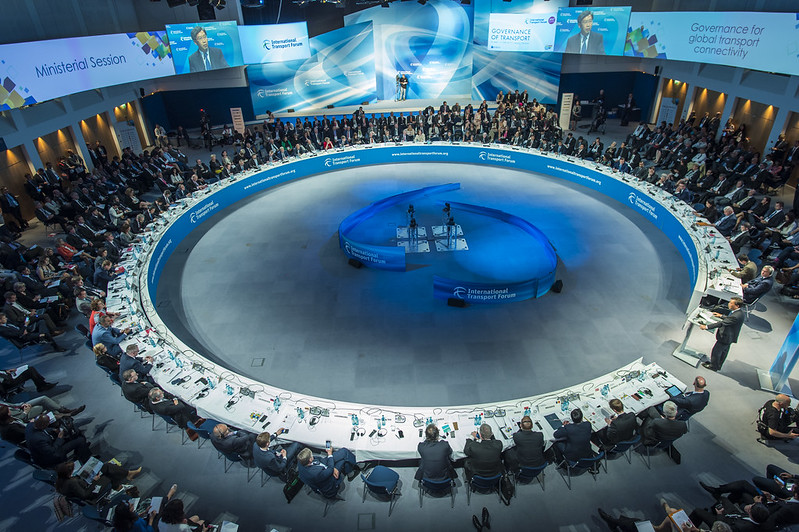Author: Marc Grau
Chief Editor: Alanna O’Malley
Dossier: Mind the gap, UN Governance in perspective
A brief introduction to the history of disarmament
The control over the spread of weapons of any kind has been a long-standing feature of the relations among nations. One of the first disarmament and arms control proposals can be found in the Middle Ages when Pope Innocenz II who prohibited under the Second Lateran Council the use of crossbows against Christians. Such a distant proposal illustrates how the advance of the military strategy and warfare has been in close relation with the regulation of war. In the contemporary era, the proposals to restrain the production of weapons were mainly focused on nuclear weapons.
After the Second World War, in which disarmament was rather non-existent, the main superpowers which, at the time, were the United States and the Soviet Union, found themselves in an unlimited arms race. The mutual fear and the will to limit each other’s military potential led to the creation of multiple proposals to ensure a restrained arms race. The first major treaty related to such proposals was the Partial Test Ban Treaty which aimed at prohibiting all underground nuclear tests. This initial treaty was followed by many others in the mid-phase of the Cold War, the 1960’s, such as the crucial Treaty on the Non-Proliferation of Nuclear Weapons, the comprehensive Ban on Nuclear Tests and other disarmament treaties which affected ballistic proliferation and the arms race as the bilateral START series and the ABM and INF treaty. After that early phase and the end of the detente era, the proposals for disarmament were widened to regulate chemical and biological weapons production.
The UN and disarmament
Despite such broad developments during the second half of the 20th century, the United Nations Charter only mentions disarmament as a principle to be governed by the UN General Assembly and the UN “armed forces”. In its Chapter III, Art. 11 the Charter states that “The General Assembly may consider the general principles of cooperation in the maintenance of international peace and security, including the principles governing disarmament and the regulation of armaments, and may make recommendations regarding such principles to the Members or to the Security Council or to both.” Therefore, disarmament is rather defined as an issue that should be discussed by member-states within the UNGA and not something that is part of the core aims of the UN.
The limited references to disarmament within the UN Charter do not seem to match the current reality of the UN involvement and support for disarmament. First of all, the UN created the Office for Disarmament Affairs (UNODA) back in 1998 after the Secretary-General’s reform program, which he outlined in the UNGA (A/51/950). Also, the UN created the Conference on Disarmament in 1978 which was defined as a “single multilateral disarmament negotiating forum of the international community” and aimed, inter alia, at the “cessation of the nuclear arms race and the transparency in armaments.” Also, the First Committee from the UN General Assembly addresses disarmament issues. But more importantly, the issue of disarmament has been incorporated into the agenda of the Secretary-General, mainly from the mandate of Kofi Annan. Since then, the leadership of the UNSG within the disarmament agenda has resulted in the promotion of youth proposals. And that is the key issues of this article, the discussion of UN proposals to bring disarmament closer to future generations.
The increasing role of youth and UN recognition
Disarmament has traditionally been a matter related to national foreign policy and heads of states. An example of that are the presidential nuclear weapons rounds led by the US and the Soviet Union during the Cold War. Since then, proposals on disarmament have been led mainly by national representatives and heads of state. Therefore, youth has been a minor matter of concern within the disarmament agenda except for those states which adhere to the humanitarian agenda.
While previous UNSG, such as Kofi Annan and Ban Ki-Moon, emphasized the relevance of disarmament, the document “Securing Our Common Future, An Agenda for Disarmament” published in 2018 by the UNSG Antonio Guterres was the first to explicitly address youth and disarmament. In short, the agenda recognized the fact that “whereas the high politics of international security tends to be dominated by global elites, patriarchal structures and the powerful, youth movements have often been more inclusive of various perspectives, including from victims and affected communities, indigenous peoples and underrepresented populations such as women.” Moreover, the document highlighted that young people were widely involved in campaigns to ban landmines, cluster munitions and Weapons of Mass Destruction, especially in the case of nuclear weapons. Such recognition was a major milestone for young leaders and associations that work in the promotion of disarmament as it constituted an explicit reference to their active role. An interesting and representative fact extracted from the Agenda is that “every member of the staff of the International Campaign to Abolish Nuclear Weapons was under the age of 35 when it was awarded the Nobel Peace Prize in 2017.” Such a figure illustrates the relevance that youth can have within the field of disarmament, which has been traditionally led by so-called high politics.
Despite the positive progress and impact of youth in furthering the field of disarmament, the Agenda also highlighted regional disparities and their implications on limiting the opportunities of younger generations from the Global South to fully participate in the global debate and support for disarmament. To tackle such inequality, the Agenda set as a main objective the promotion of disarmament education through a culture of peace and non-violence. However, the Agenda falls short in offering a clear path on how to ensure disarmament education in regions such as the Global South. Therefore, despite the Agenda being a major step forward in recognizing the role of youth in disarmament, it is limited because it does not offer a clear path on how to promote and ensure universal youth participation in disarmament related matters.
After the Agenda was published, the UNGA adopted the Resolution 74/64 which was titled “Youth, Disarmament and Non-Proliferation”. In this resolution, the UNGA recognized the important and positive contribution that young people can make to the promotion and attainment of sustainable peace and security. Moreover, the UNGA requested the UNSG to seek specific measures to promote the meaningful and inclusive participation and empowerment of youth on disarmament and non-proliferation issues”. As a result, the Youth for Disarmament Initiative was founded as a youth outreach initiative within the framework of the UNSG Agenda for Disarmament.
Concluding remarks: recognition, but what else?
To sum up, the UN support for youth in disarmament affairs has grown over time. Although Kofi Annan and Ban Ki-Moon increased the relevance of disarmament within the UN agenda, the UNSG Antonio Guterres finally achieved consolidating the importance of youth in disarmament affairs and promoted programs to support and widen the youth involvement in the discussion of disarmament. With that, the main aim of the UN has been to promote the education of younger generations in matters related to peace and security, such as disarmament, and with that contribute to the fourth Sustainable Development Goal, which is quality education.

About the author
Marc Grau is a graduate from the Advanced MSc in International Relations and Diplomacy organized by Leiden University in cooperation with the Clingendael Institute, the Hague, the Netherlands. He is a recipient from the Leiden University Excellence Scholarship (LExS). He previously graduated with a BA in Philosophy, Politics and Economics from the Pompeu Fabra University in Barcelona, Spain. Currently, he is conducting an internship with the Chair of UN Studies in Peace and Justice at Leiden University.
